Woodworking software has revolutionized the way we design, build, and create woodworking projects. From simple designs to complex CNC projects, these programs offer a range of tools and features to help woodworkers of all levels take their craft to the next level.
These programs allow you to create detailed 2D and 3D models, simulate cutting and assembly processes, generate CNC code for automated woodworking, and even manage your projects and collaborate with others. With so many options available, choosing the right woodworking software can be daunting, but with the right knowledge and understanding, you can find the perfect tool to help you achieve your woodworking goals.
Introduction to Woodworking Software
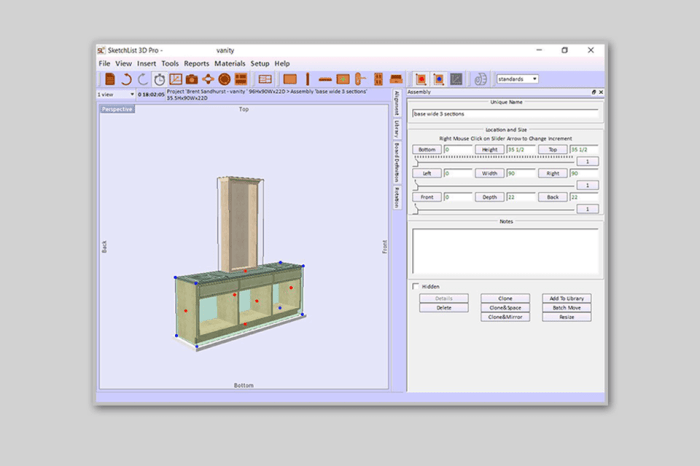
Woodworking software has become an indispensable tool for woodworkers of all levels, from hobbyists to professionals. It offers a wide range of benefits, from enhancing design and planning to streamlining production processes.
Types of Woodworking Software
Woodworking software encompasses a diverse range of applications designed to assist woodworkers in various aspects of their craft.
- Design Software: Design software enables users to create detailed 2D and 3D models of woodworking projects. It facilitates visualization, planning, and precise measurements. Popular design software options include SketchUp, AutoCAD, and SolidWorks.
- Simulation Software: Simulation software allows woodworkers to test and refine their designs virtually. This software simulates the cutting process, material properties, and assembly procedures, enabling users to identify potential issues and optimize their designs before physical construction. Examples include Vectric Aspire and Autodesk Fusion 360.
- CNC Software: CNC software is specifically designed for controlling computer numerical control (CNC) machines. It translates digital designs into machine-readable instructions, enabling automated cutting, carving, and engraving. Common CNC software programs include Mach3, LinuxCNC, and Vectric VCarve Pro.
Popular Woodworking Software Programs
The woodworking software market offers a variety of programs catering to different needs and skill levels. Some popular options include:
- SketchUp: A user-friendly 3D modeling software widely used by hobbyists and professionals for designing furniture, cabinets, and other woodworking projects.
- Autodesk Fusion 360: A powerful cloud-based software that combines design, simulation, and manufacturing capabilities. It is suitable for both beginners and experienced woodworkers.
- Vectric Aspire: A specialized CNC software designed for woodworking, offering features for 2D and 3D design, toolpath generation, and CNC machine control.
- SolidWorks: A professional-grade 3D CAD software that provides advanced design and engineering tools for complex woodworking projects.
Design and Planning
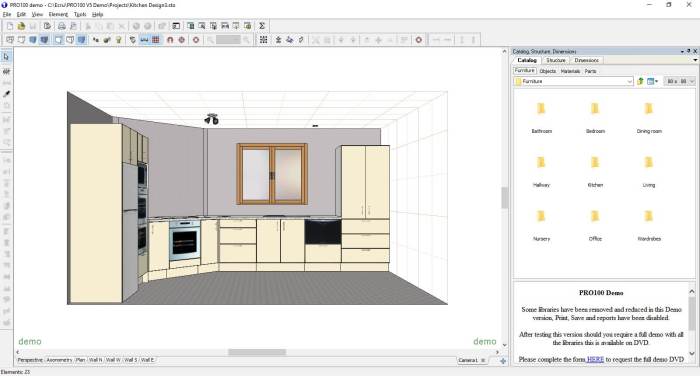
Woodworking software provides a powerful set of tools for designing and planning your projects. With these programs, you can create detailed 2D and 3D models, visualize your ideas, and generate precise cutting lists and material estimates. This ensures that you have a clear understanding of your project before you even pick up a saw.
Creating 2D and 3D Models
Creating 2D and 3D models is a crucial part of woodworking design. This allows you to visualize your project from different angles, identify potential problems, and make adjustments before you start building.
Using 2D Drawing Tools
2D drawing tools allow you to create flat representations of your project. These tools are often used to create detailed plans, drawings, and blueprints.
- Line tools: These tools allow you to draw straight lines and curves, which are the foundation of any woodworking design.
- Shape tools: These tools allow you to create basic shapes such as rectangles, circles, and polygons.
- Dimensioning tools: These tools allow you to add dimensions to your drawings, ensuring that all parts are the correct size.
- Text tools: These tools allow you to add text to your drawings, such as labels, notes, and instructions.
Using 3D Modeling Tools
3D modeling tools allow you to create a realistic representation of your project. These tools can be used to visualize the project from any angle, identify potential problems, and make adjustments before you start building.
- Extrude tools: These tools allow you to create 3D objects by extruding a 2D shape along a path.
- Revolve tools: These tools allow you to create 3D objects by revolving a 2D shape around an axis.
- Boolean operations: These operations allow you to combine or subtract 3D objects, creating complex shapes.
- Rendering tools: These tools allow you to create photorealistic images of your 3D models, giving you a realistic preview of your finished project.
Software Examples
Many woodworking software programs offer a range of design and planning tools. Here are some popular examples:
- SketchUp: This program is known for its user-friendly interface and powerful 3D modeling capabilities.
- Fusion 360: This program offers a wide range of design and manufacturing tools, including 3D modeling, CAM (Computer-Aided Manufacturing), and simulation.
- SolidWorks: This program is a professional-grade CAD (Computer-Aided Design) software that is widely used in engineering and manufacturing. It offers advanced features for creating complex 3D models.
- Autodesk Inventor: This program is another professional-grade CAD software that is used for a wide range of applications, including woodworking.
Creating Plans, Drawings, and Blueprints
Once you have created a 2D or 3D model of your project, you can use woodworking software to generate plans, drawings, and blueprints. These documents will provide you with detailed instructions for building your project.
Generating Cutting Lists
Woodworking software can automatically generate cutting lists based on your design. These lists specify the dimensions and quantities of each piece of wood needed for your project.
Creating Assembly Diagrams
Some software programs can create assembly diagrams, which illustrate how to assemble the different parts of your project. These diagrams can be very helpful for visualizing the construction process.
Generating Blueprints
Blueprints are technical drawings that show the overall dimensions and layout of your project. These drawings are essential for accurate construction and can be used to communicate your design to other people.
Simulation and Visualization
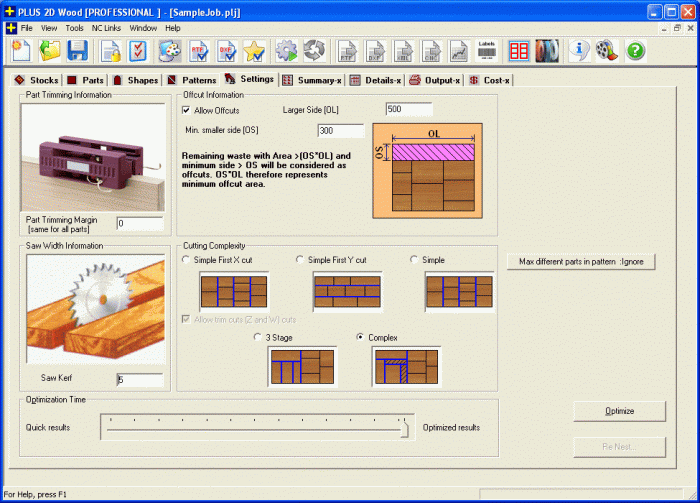
Woodworking software offers powerful simulation and visualization tools that help you bring your projects to life before you even pick up a saw. This lets you experiment with different designs, materials, and techniques without wasting time and resources on trial and error.
Visualizing Projects in 3D
Software allows you to create a 3D model of your project, providing a realistic representation of how it will look when finished. This is particularly helpful for complex projects where it can be difficult to visualize the final outcome from 2D plans.
Here are some examples of software tools for visualizing woodworking projects in 3D:
- SketchUp: This popular software is known for its user-friendly interface and powerful 3D modeling capabilities. It offers a wide range of tools for creating detailed models, including textures, materials, and lighting effects.
- SolidWorks: This professional-grade software is widely used in engineering and design industries. While it has a steeper learning curve than SketchUp, it provides advanced features for creating complex models with high accuracy.
- Fusion 360: This cloud-based software offers a comprehensive suite of tools for design, engineering, and manufacturing. It’s a great option for woodworkers who want to integrate their designs with other manufacturing processes.
Simulating Cutting and Assembly
These tools allow you to virtually simulate the cutting and assembly process of your project. You can experiment with different cutting angles, joint types, and assembly methods to ensure everything fits together perfectly. This can save you time and frustration in the real world by avoiding costly mistakes.
Simulating Finishing Processes
Some woodworking software even allows you to simulate finishing processes like staining and painting. This lets you preview how different finishes will look on your project, helping you choose the best options for your desired aesthetic.
CNC Integration
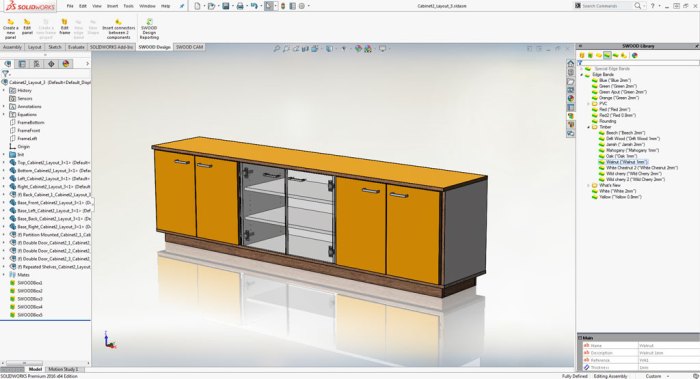
Woodworking software can be seamlessly integrated with CNC machines, bringing automation and precision to woodworking projects. This integration enables software to generate CNC code, which instructs the CNC machine to execute complex cuts and designs with accuracy and speed.
Generating CNC Code
CNC code is a set of instructions that the CNC machine understands. Woodworking software can automatically generate this code based on the design created within the software. The software takes the design, analyzes the required cuts, and translates them into a specific format for the CNC machine.
The CNC code usually includes instructions for the machine’s movements, tool changes, and cutting parameters.
Controlling CNC Machines
Woodworking software provides various features for controlling CNC machines. These features allow users to manage the machine’s operations, monitor its performance, and ensure precise execution of the design.
- Machine Setup and Configuration: Software allows users to configure the CNC machine’s settings, such as the tool library, work area dimensions, and cutting speeds.
- Tool Path Visualization: The software can visualize the tool path, allowing users to preview how the CNC machine will cut the material and identify potential errors or collisions before starting the operation.
- Simulation and Dry Run: Software allows users to simulate the CNC machining process virtually. This feature helps identify any issues in the design or code before running the actual machining operation.
- Real-time Monitoring: Some software provides real-time monitoring of the CNC machine’s operation. This feature allows users to track the machine’s status, progress, and any potential errors.
- Post-processing and Optimization: The software can optimize the generated CNC code for better efficiency and accuracy. It can also handle post-processing tasks, such as creating toolpath reports and generating G-code for specific CNC machines.
Examples of CNC Integration in Woodworking Software
Several woodworking software programs offer CNC integration features. For example, Vectric’s VCarve Pro software allows users to design and generate CNC code for complex woodworking projects. The software includes features for tool path optimization, material simulation, and real-time monitoring of the CNC machine.
Another example is Autodesk Fusion 360, which provides a comprehensive suite of tools for designing, simulating, and generating CNC code for woodworking projects. The software offers advanced features for CAM (Computer-Aided Manufacturing) and allows users to control various CNC machines through its integrated interface.
These examples demonstrate how woodworking software can streamline the CNC machining process, enabling users to create intricate designs and complex woodworking projects with precision and efficiency.
Project Management
Woodworking software can be a powerful tool for managing your projects, helping you stay organized, on schedule, and within budget. It provides a centralized hub for all your project information, from design to materials to finances.
Organizing Materials
Software tools can help you keep track of all the materials you need for your project. You can create lists, assign quantities, and even calculate costs based on current market prices. This helps you avoid overbuying or running out of materials mid-project.
Tracking Progress
Woodworking software often includes features for tracking your progress. You can create a timeline, set milestones, and mark tasks as complete. This helps you visualize your project’s progress and identify potential delays.
Managing Budgets
Budgeting is an essential part of woodworking projects. Software can help you create a detailed budget, track your spending, and identify areas where you can save money.
Software Tools for Project Planning and Scheduling
There are many software tools available specifically for project planning and scheduling.
- Project Management Software: Popular options like Asana, Trello, and Monday.com can be used to manage woodworking projects, with features for task management, collaboration, and progress tracking.
- Specialized Woodworking Software: Some software programs, such as SketchUp and Fusion 360, have built-in project management features. These tools can be particularly helpful for organizing your design, materials, and manufacturing processes.
Collaboration and Sharing
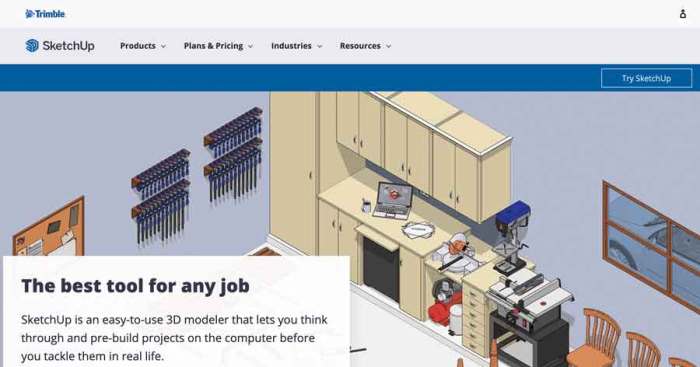
Woodworking software isn’t just about designing and building on your own. It can also be a powerful tool for collaboration, allowing you to share your projects, plans, and designs with others, whether they’re fellow woodworkers, clients, or even team members.
Sharing Projects and Plans
Sharing projects and plans with others can be incredibly valuable, especially when working on complex projects or seeking feedback. Many woodworking software programs offer features that make sharing seamless and efficient.
- Exporting Files: Most software allows you to export your projects in various formats, such as PDF, DXF, or STL, which can be easily shared and opened by others.
- Cloud Storage Integration: Some software integrates with cloud storage services like Dropbox or Google Drive, making it easy to store and share projects online.
- Direct Sharing Options: Many programs include built-in sharing options, allowing you to send projects directly to others via email or through a shared link.
Online Collaboration
For even more collaborative projects, some woodworking software offers online collaboration features, enabling real-time editing and feedback.
- Real-Time Collaboration: This feature allows multiple users to work on the same project simultaneously, making it ideal for team projects or when seeking feedback from multiple individuals.
- Commenting and Feedback: Online collaboration tools often include features for leaving comments and feedback directly on the project, streamlining the communication process.
- Version Control: These tools often incorporate version control, allowing you to track changes and revert to previous versions if needed.
Learning Resources and Support: Woodworking Software
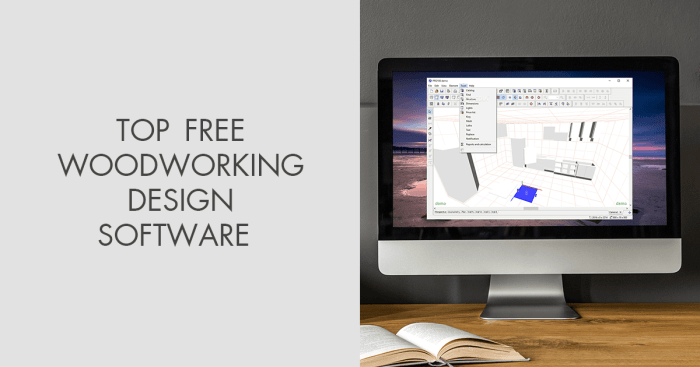
Learning to use woodworking software effectively is a journey that often involves seeking guidance and support. Fortunately, there are numerous resources available to help you navigate the intricacies of these programs, from basic operation to advanced techniques.
Tutorials and Online Courses
Tutorials and online courses offer a structured approach to learning woodworking software. They provide step-by-step instructions, demonstrations, and practice exercises to help you grasp the fundamentals and explore more advanced features. Many software providers offer their own tutorials and training materials, often available directly within the software or on their websites. You can also find excellent tutorials and courses on popular online learning platforms such as YouTube, Skillshare, and Udemy.
Online Communities and User Forums
Engaging with online communities and user forums can be incredibly valuable for learning and troubleshooting. These platforms are filled with experienced users who are willing to share their knowledge, tips, and solutions. You can find communities dedicated to specific woodworking software programs, general woodworking discussions, and even forums focused on specific woodworking techniques.
For example, the “Woodworking Software” forum on a popular woodworking website provides a space for users to ask questions, share projects, and discuss software-related issues.
Technical Support
When you encounter technical difficulties or have questions about specific software features, technical support can be a lifeline. Most woodworking software providers offer technical support channels, such as email, phone, or live chat. These support teams are trained to address a wide range of issues, from installation problems to troubleshooting specific software functions.
Future Trends in Woodworking Software
Woodworking software is constantly evolving, with new features and functionalities emerging regularly. This evolution is driven by advancements in technology, user demands, and the changing landscape of the woodworking industry. The future holds exciting possibilities for woodworking software, with innovations that will streamline workflows, enhance design capabilities, and foster greater creativity.
Advancements in Design and Simulation
Advancements in design and simulation are shaping the future of woodworking software. This area is witnessing the integration of powerful tools that enable woodworkers to create more complex and intricate designs with greater accuracy and efficiency.
- Parametric Modeling: Parametric modeling allows for the creation of designs that are dynamically linked to parameters. This means that changing one parameter, such as the length of a board, automatically updates all related dimensions in the design. This feature streamlines the design process and reduces the risk of errors.
- Advanced Rendering: Real-time rendering and photorealistic visualization are becoming increasingly sophisticated, allowing woodworkers to create highly detailed and immersive representations of their designs. This enables better communication with clients, facilitates informed decision-making, and helps visualize the final product before it is built.
- Virtual Reality (VR) and Augmented Reality (AR): VR and AR technologies are being integrated into woodworking software, providing users with interactive and immersive experiences. Woodworkers can virtually walk through their designs, explore different material options, and visualize the finished product in its intended space.
Integration of Artificial Intelligence and Machine Learning, Woodworking software
Artificial intelligence (AI) and machine learning (ML) are poised to revolutionize woodworking software, automating tasks, optimizing workflows, and enhancing design capabilities.
- AI-Powered Design Assistance: AI algorithms can analyze user preferences, design trends, and historical data to suggest design ideas and optimize designs based on specific criteria. This can significantly accelerate the design process and generate innovative concepts.
- Automated Optimization: AI and ML can analyze material properties, manufacturing constraints, and design parameters to automatically optimize designs for efficiency, cost-effectiveness, and sustainability. This can help reduce waste, minimize production time, and improve the overall quality of woodworking projects.
- Predictive Maintenance: AI-powered predictive maintenance systems can monitor the performance of woodworking machinery and predict potential failures, allowing for proactive maintenance and reducing downtime.
Outcome Summary
Woodworking software is a powerful tool that can help you take your woodworking projects to the next level. By embracing the power of design, simulation, and automation, you can create stunning woodworking projects with greater accuracy, efficiency, and creativity. Whether you’re a beginner or an experienced woodworker, there’s a woodworking software program out there that can help you achieve your woodworking dreams.
Query Resolution
What are the best woodworking software programs for beginners?
There are many user-friendly woodworking software options for beginners, such as SketchUp, Fusion 360, and Autodesk Inventor. These programs offer intuitive interfaces and tutorials to help you get started quickly.
Is woodworking software expensive?
Woodworking software prices vary depending on the features and functionality offered. Some programs offer free versions or trials, while others require a subscription or one-time purchase. You can find options to fit different budgets.
Do I need a powerful computer to run woodworking software?
The required computer specifications for woodworking software depend on the program you choose and the complexity of your projects. However, most programs can run on a modern computer with a decent processor and graphics card.
Can I use woodworking software for furniture design?
Absolutely! Woodworking software is ideal for furniture design. You can create detailed 3D models of your furniture pieces, experiment with different designs, and even generate cut lists for your materials.
Woodworking software can be a real game-changer for any project, from simple shelf building to intricate furniture designs. If you’re looking to take your skills to the next level, you should definitely check out woodworking carpentry resources for inspiration and techniques.
Once you’ve got the basics down, woodworking software can help you visualize your plans, create accurate cuts, and even generate shopping lists for your materials.
